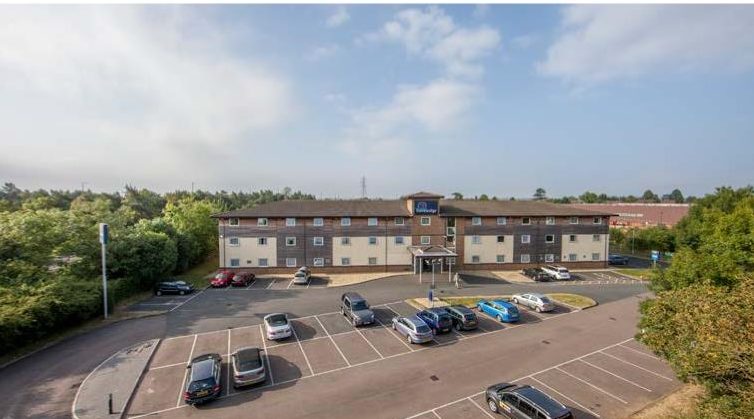Brexit News
So now we know! Eight months after the historic Brexit vote, the Government has at last shown its hand, indicating that Britain ‘cannot possibly’ remain within the European single market as doing so would mean ‘not leaving the EU at all’, according to Prime Minister Theresa May, who has stated that the control of immigration was paramount.
The House of Commons duly endorsed the public’s decision by voting heavily in favour of allowing the Prime Minister to sign Article 50 of the Treaty of Lisbon which is the mechanism for starting the formal process of leaving. It now only requires formal approval from the upper house. It is expected that Article 50 will be signed by the end of March. It was also announced that parliament will be given the opportunity to vote on the actual terms that are negotiated.
At the time of the referendum, there was a widespread belief that the UK economy would experience a sharp and rapid deterioration should the country elect to leave the EU. So far, that has not materialised. Solid economic growth of 0.6% in the fourth quarter of 2016 – the same rate as was seen in the two previous quarters – pushed the UK’s growth to 2.0% over the year, significantly higher than had been anticipated and, remarkably, higher than that of any other major economy.
The UK’s resilience has also prompted marked upgrades to growth expectations for this year and next. The IMF upped its forecast by 50 basis points this year (to 1.6%) although that has been partially offset by lowering 2018 expectation (to 1.4%). An even greater upward forecast revision was signalled by the Bank of England. Criticised heavily for its downbeat assessment of Britain’s short term prospects at the time of the referendum, the Bank has raised its expectations to growth of 2.0% for this year (from 0.8% six months ago) and to 1.6% for next year.
All is not good news, however. Following the immediate and sustained deterioration of sterling since the referendum, imported inflation is beginning to feed through, raising the possibility that the Bank’s own inflation rate target of 2.0% being exceeded next year, maybe by some margin. This higher inflation is likely to hit consumers who have only recently seen wage growth outstrip rising prices for the first time since the onset of the global financial crash.There has been talk of some employers (mainly financial firms) moving staff to financial hubs in the eurozone. While that is likely to happen to some extent, these headlines are likely to overstate the probable number of jobs at risk. Moving many, mostly unwilling, staff to Paris or Frankfurt is an extremely expensive operation, particularly as employment law in the continent is much more employee friendly. The precise nature of this risk is one of many that will only become apparent once the Brexit negotiations have concluded.
Global economy
As 2016 drew to its conclusion, we began to realise that Britain’s momentous Brexit decision was not the only big story of the year. The surprise election of Donald Trump to the US Presidency surpassed even Brexit in the column inches it generated. Neither result was expected, but Trump’s election was the final act of a year marked by anti-establishment protests. Both events will have significant impacts around the world in the coming years – only time will tell which one will ultimately prove the more momentous.
Economically, 2016 turned out to be another lacklustre year. Global growth of an estimated 3.1% would be lower than that of the previous year (3.2%) and the lowest since the recession hit 2009, when world GDP contracted by 0.9%. The disappointing rate of growth last year was a result of poorer than expected growth in the developed economies in the early months of last year, but the slight acceleration towards the end of the year brings the prospect of stronger growth in the short term. Much of course will depend on Trump’s early actions, but stock markets have so far given his appointment the seal of approval with the widely quoted (but less representative) Dow Jones Index bursting through the 20,000 level in late January.
Any pick up in the western economies though is likely to be matched by a continued dull outlook for emerging economies where rising interest rates and weakening currencies are likely to hold back growth. Overall we expect global economies to be a little more buoyant this year, with a forecast growth rate of 3.4% for this year and 3.6% for 2018 – still lacklustre compared to global growth before the financial crash.
Risks, already high, have been elevated, primarily on account of Trump’s election and the uncertainty of what policies are likely to shape the US over the coming years.
The EU economy
Activity in the eurozone picked up in the final quarter of 2016 as GDP posted growth of 0.5%, up from the 0.4% recorded in the third quarter. Further positive news came from the announcement that the eurozone’s overall unemployment rate has dropped below 10% (to 9.6%) – a rate not seen for seven years.
However welcome these statistics are, there are few signs that the single currency bloc has addressed many, if any, of the structural problems that have beset it since its formation. And in a surprise announcement, it was reported that the eurozone’s annual rate of inflation had jumped to 1.8% in January, from December’s 1.1% and which was much higher than expected. Already there have been calls for the European Central Bank to slow or halt its bond-buying programme and/or to even raise interest rates.
Despite the improvement in the eurozone’s growth in Q4, the annual rate of growth, at 1.7%, was disappointing and lower than the previous year’s growth of 2.0%. Political challenges and uncertainties, both from within the EU and globally may hinder the zone’s ability to build on the momentum seen at the end of 2016. Apart from the Brexit challenges, elections in several EU countries over the coming months may fuel the rise of more populist parties, each with their own agendas with regard to the eurozone. Finally, the election of President Trump is likely to have a significant effect on world trade, although at present, any impact cannot be quantified. We do not anticipate France and Germany, the biggest economies, to post anything other than modest growth rates over the next two years. In a worrying development, consumer spending in these two countries dropped sharply in the fourth quarter, and with inflation expected to remain at elevated levels (at least compared to the recent past), it is difficult to see the consumer driving growth in the foreseeable future.
Given these potential headwinds for the eurozone, we forecast marginally lower growth this year and next, at 1.6% for both years, representing further years of lacklustre growth.
The UK economy
The UK’s resilience since the referendum continues. A third successive quarter of 0.6% growth pushed up growth over 2016 to 2.0%, significantly higher than had been expected immediately after the vote occurred. Indeed, such is the momentum built up in recent months that growth forecasts have been raised markedly for this year. Our forecast growth rate is 1.6%, but there are some forecasters expecting growth at similar levels to last year.
Despite this positive news, there are few signs that the economy is being rebalanced more towards exports and less to consumer spending. Once again it was the latter which drove activity in the fourth quarter. Given the rising levels of inflation that will emerge over the course of this year, both from increases in commodity prices and from sterling’s depreciation, the consumer is not going to be as well placed in the near future. Part of the upgrades to economic growth have been factored in from consumers dipping into their savings, prompting the Bank of England, amongst others, to signal that the national savings rate could fall to 4% this year, the lowest rate in over half a century. Higher inflation is the one factor that the Brexit vote initiated. Decembers’ increase to 1.6% was the highest since June 2014, but intriguingly, Britain’s annual inflation rate was virtually the same as that of the Eurozone at the end of last year.
Despite Prime Minister May having disclosed that Britain would be pursuing a clean break from Europe, there is as yet little information as to how the negotiations with the EU will fare. This will become clearer over the coming months. Similar uncertainty exists regarding the future pattern of interest rates. On the one hand, the higher inflation forecast would normally signal a tightening of fiscal policy, however, the likelihood of a weakening economy as we move through 2017 and 2018 would suggest the opposite. The Bank of England’s Monetary Policy Committee will have a difficult decision and much will depend on survey data over the coming months. Data recently have pointed to a slight slowdown in activity in the early weeks of this year, which if it continues at that level suggests growth of around 0.5% in the first quarter. The fall in sterling is likely to benefit exporters, but the key over the coming quarters will be how consumers react in the light of potentially lower disposable income.
Market Commentary
According to MSCI, the commercial property market recovered its poise in the final quarter of last year. The IPD Quarterly Index delivered a total return of 2.2% in the last three months of the year, substantially better than the Brexit-influenced third quarter. 2016 was quite a year for commercial property. In George Osborne’s last budget he increased stamp duty land tax then barely three months later came the referendum. Both hit valuations of commercial property – the latter having a potentially greater future influence – and ensured that property delivered a total return of 3.6% over the year – the lowest calendar year return since the recession hit 2008.
That was certainly a disappointing level of return, almost 10 percentage points lower than the previous year, but nonetheless creditable in the face of the economic and political headwinds faced. The yearly outcome was certainly better than the initial knee-jerk reaction after the vote would have indicated and it is encouraging that average capital values were rising again by the year end. The actual outcome was also more than 3 percentage points greater than the most recent consensus forecasts. It should also come as no surprise that the top 10 transactions by size last year all occurred in the first half.
Consensus forecasts are equally weak over the coming 12 months. The latest forecasts, as at November, paint a cautionary picture, expecting yields to move out which, combined with the expectations of a slight fall in average rents, is expected to deliver negligible total returns this year of 1.3% with 5.1% total returns forecast for 2018.
These forecasts, in our opinion, paint too gloomy a picture. There is justifiable concern over the state of the economy in the near term, particularly over businesses deferring investment plans but the corollary of the lacklustre economic outlook is lower interest rates for longer, notwithstanding the Brexit-influenced higher inflation. Consequently, we do not see property yields of well located properties let to strong covenants suffering a major outward yield movement. Property development is increasing – see the central London office section for more information – but we are not expecting to see a development boom similar to that of the early 1990s.
Some secondary properties are going to continue to struggle in valuation terms with retailers still downsizing and prime pitch continuing to contract. Those well let properties, meanwhile, are likely to deliver superior returns, given their higher income yield. Such well let secondary properties withlong leases though are difficult to find.
Sterling depreciation has made British assets cheap. With Europe still treading water and huge risks surrounding US policy, UK commercial property is likely still to be the market of choice for overseas investors, particularly with its steady and secure income.
Central London offices
In terms of both transactions and take up, 2016 posted lower figures in both the City and West End office markets. However, given the extent of the political and economic shocks over the year, both turnover and take-up can be regarded with a great deal of relief.
A strong December brought the total transactions in the City in 2016 to £8.07bn which although 25% below the total for 2015, was still 30% above the long term average. West End turnover was more resilient as last year’s transactions of £7.86bn were only 9% adrift of the total for the previous year and 10% above the long term average. It was also the fourth largest annual take up in history. There was though a clear difference in the picture of buyers and sellers in both markets. Asian purchasers accounted for by far the largest group in the City, making up 44% of the deals. UK investors, conversely were the largest sellers of City properties, yet were the largest group of buyers of West End properties over the year.
A very similar pattern occurred in the letting market. Take up in the City and West End markets totalled 5m sq ft and 3.68m sq ft respectively, down 25% and 7% from 2015’s totals. In both markets, take up exceeded the long term averages.
London office supply has been on the rise for some months, although we are not yet witnessing the extent of speculative development that has blighted past central London office markets. Supply of available space has risen to 7.2m sq ft in the City and to 4.17m sq ft in the West End, representing vacancy rates of 5.8% and 3.8% respectively. Supply coming on stream totals almost 5m sq ft in the City this year and almost 2.5m sq ft in the West End with just short of half of this space speculative. Prime yields have been static over the second half of this year at 4.25% in the City and 3.25% in the West End. With the increase in developments coming on stream in the coming year, the prospect of further rental growth may be lower than for some time, with the likelihood of greater rent free periods impinging on the City market in particular. Grade A rents have been relatively stable over 2016, and at the end of the year were around £63 psf in the City and around £74 psf in the West End. After six years of particularly strong rental growth and capital value growth, the central London office market was always poised to slow down at some point. There were signs that it had begun slowing even before the referendum result killed any hopes of a continuation of the bull run. Forecasts point to a sharp reduction of about 7% in average capital values this year in the central London office market, driven by weakening rents and rising yields. As highlighted elsewhere, we do not believe that the outward yield shift will be as acute as many believe, although we acknowledge that when sentiment changes, it will occur very quickly, possibly rendering all forecasts obsolete in a short space of time.
All statistics from Savills Research Author: Stewart Cowe 08/02/2017







